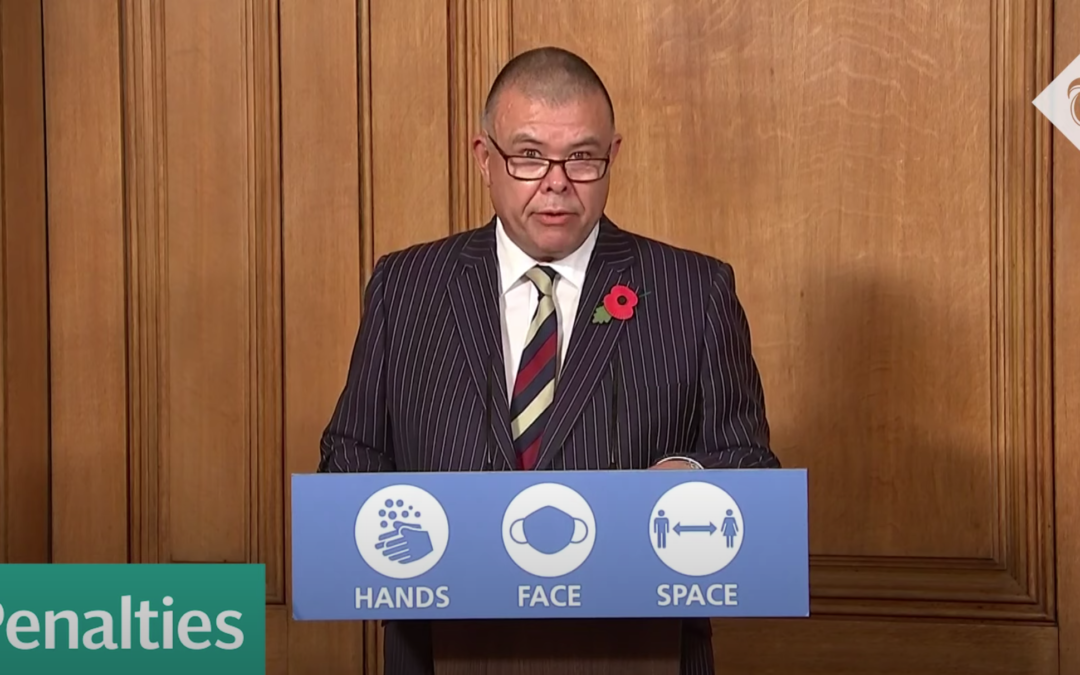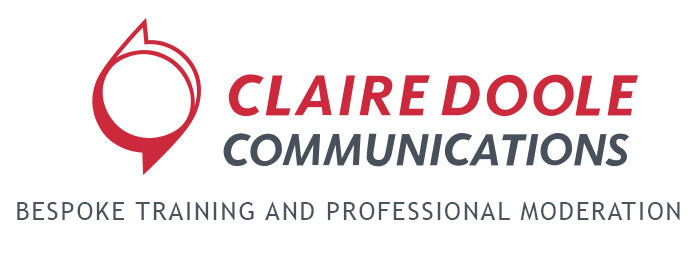
by Claire Doole | Nov 20, 2022 | Speechwriting
One of the most common refrains I hear when coaching senior leaders in public speaking is they have to rewrite most of the speeches drafted for them.
Much of the time the person struggles to deliver the speech because it has not been written for them. In the words of one agency head, “it doesn’t capture my voice.”
I have written many speeches. I see my job as writing the speech that the speaker themselves would write if only they had the time. I have to stand in the shoes of that person and see the world as they see it.
Below are some tips based on how I capture my speakers voice.
Research
Listen to recordings of the speaker at events and conferences. If you are a staff member observe the speaker at town hall meetings or during internal webinars.
Get to know your speaker
You must have access to the speaker so that they are involved in the drafting process. During a phone call or in-person meeting, together, you will first have to define the purpose, audience and argument of the speech. But don’t forget to drill down on the essence of that person – what drives them? What are their beliefs? What type of person are they?
You can often find out a lot about people by asking them about their motivation for doing the job they are doing or the lessons they have learnt through success or failure. These sorts of questions typically elicit stories that give an insight into the person.
Record the conversation so you can play it back and become familiar with their voice
Identify their speaking style
When listening to the recordings from your research and meeting, ask yourself these questions:
1. Is the speech in their mother tongue? Or a foreign language?
2. Are they a fast or slow speaker?
3. Do they prefer long or short sentences?
4. Do they like simple or sophisticated words?
5. Is there style plain or florid?
6. Do they use metaphors and analogies?
7. How do they structure an argument? Do they get to the point and
then explain how and why or do they lead up to the point?
If you are writing for a non-native speaker, then make sure that you don’t use words that that they can’t pronounce. I once had a speaker who could not say the “ch” as in climate change, which was a shame as he was head of an environmental agency. So, we would use climate crisis or emergency instead.
Write for the speaker
It is very tempting to write for yourself, so guard against this by playing the recording of their voice. You need to hear the speaker’s voice in your head as you write. If they use a lot of intensifiers like “really”, “extremely” “hugely” then you need to reflect that, bearing in mind though that they might start to sound like King Charles!
Read it out loud
This may seem to contradict my previous point. But you will soon see if the argument stands up, if the ideas are too repetitive or if the sentences are too long for anyone to say with impact.
A speech is not written in a day. It needs to be honed and validated by the speaker so it not only says what they want to say but also sounds like them.
If you follow these tips you have less of a chance that the speaker will go off script or announce with a flourish that they are discarding the speech you have carefully crafted!

by Claire Doole | Oct 9, 2022 | Blog, Speechwriting
What is the first thing you think about when asked to give a presentation or speech?
That is a question I often ask in my presenting and speechwriting workshops.
The answers are often very candid but very wrong. They range from the slides I can recycle from previous presentations to structure and messaging.
You can’t give an impactful presentation or speech until you have worked out who you are talking to. Too many speaking engagements are wasted opportunities because the speaker has not tailored his or her content to the audience. If you give some off-the-shelf presentation, audiences know that you are speaking at them and not to them, and will, often, zone out.
You need to ask yourself three questions:
1. What does my audience know about the topic of my speech?
2. What is their attitude to the topic?
3. How big is the audience, and what is the setting?
Know your audience
The audience will likely be a mix – some know more, others less. In this case, you need to speak so that everyone in the audience understands what you are saying. Albert Einstein once said, “If you can’t explain it simply, you don’t understand it well enough.” It is worth taking the time to do this, as the spoken word must be simple as the audience, unlike the written word, must understand it immediately.
Audience attitude
If you are facing a hostile or skeptical audience, you must select your arguments and supporting evidence carefully. I often advise to connect immediately with this type of audience by addressing the concerns they may have. If you work for an oil company and are addressing environmental activists, you have to have the right level of humility, as you can easily be accused of greenwashing.
However, even with a favorable audience, you should think about what motivates them, what arguments they will find convincing and what are their biggest concerns. Here it is vital to tap into what is in it for them in terms of reward or the risk of not doing something.
Size and setting
If the audience is large and the setting formal, the style of your speech is likely to be more formal and rhetorical. If a smaller audience, particularly if you know them well, your tone should reflect this. In any case, you should think conversational rather than declamatory.
The setting – where the presentation takes place – is important as it may give you a way of connecting with the audience by referring to it. Similarly, assess how important the occasion is, as this will impact the tone and style of your speech.
It may seem like a lot of work, but it will pay off as audiences really appreciate a speaker who realizes that a successful presentation or speech must be audience- centric.

by Claire Doole | Sep 4, 2022 | Job interviews
Earlier this year I was asked to sit on an interview panel for a Director of Communications position. The organisation requested my support to reduce eight candidates down to four through a series of written and communication tests. I have helped a number of people prepare for job interviews with international organisations and companies, but I had not been in the recruiter’s chair for many years.
It was a great vantage point to assess what works and what doesn’t.
Below are ten observations based on interviewing candidates remotely:
1. Prepare. It is a cliché, but preparation does prevent poor performance. I was shocked that some candidates had scant knowledge of the organisation’s vision and mission and had not thought enough about the value they could bring. Employers are looking for what you can do for them: what gaps you can fill and what problems you can solve.
2. Don’t over-prepare. One candidate had obviously been privy to some confidential information and revealed it. This did not go down well with the panel.
3. Be prepared to answer questions based on your tests and motivation letter. As a side note, make sure that your cover letter is a single page. It should be employer centric and make them want to read your CV. (We received one letter that was 7-pages long – not a good indication of someone’s ability to be clear and concise!)
4. Give examples of what you like about the organisation’s mission, values and activities, and where it can improve.
5. Keep your answers short – less than 1 minute as it is very easy for the interviewer’s mind to drift. If they want to know more, they will ask follow-up questions.
6. Have real examples of when you have failed or not succeeded. This makes you more authentic.
7. Give examples of your experience from across your career and not just from one job, as this shows the breadth of your knowledge and expertise.
8. Don’t b…s…t! Interviewers are usually very senior and a good judge of character. They have interviewed countless people and can spot someone pretending to be someone they are not!
9. Don’t read your answers from a script. Everyone can see your eyes moving from left to right. It says you are not a great communicator as the audience loses connection and interest.
10. Look straight into the camera. If you look away and your eyes dart everywhere, it can make you seem unfocused and rather maniac!
Have a look at my other job interview blogs on how to succeed at video job interviews and how every interview is a presentation.

by Claire Doole | May 29, 2022 | Blog
Many people I know – both panelists and audience members – are wondering what is the point of panel discussions.
This is what I am told by the senior managers, leaders and experts I have been training in various communication skills.
It seems they are often too promotional, disorganised, lack focus and fail to deliver any new insights or engage the audience. In fact the audience takeaway seems to be at the bottom of the organisers priority list for a successful panel discussion
And ignoring the audience is having consequences as organisers tell me that fewer people are showing up for virtual, hybrid or in-person panels. It would appear that post pandemic we are all suffering from a case of “zoomitis” and thinking twice before we tune in or turn up to an event.
Putting the audience first
Organisers need to clearly articulate why they are organising the panel and the outcomes they want to achieve, including answering the question why the audience should attend?
Here are some questions that ensure a more audience-centric focus:
• Why is this topic important right now?
• What are the key challenges the audience is facing on this topic right now?
• What does the audience need to know?
• What does the audience want to know?
• What is the benefit to them? Why should they care?
By the way, these are the same questions you should ask when preparing a presentation. Presenting is all about the audience – and so is organising a panel discussion!
It is only once they have thought about their purpose and the audience that they should invite the speakers. Big names can be a draw, but they, like all panelists must be ready to address the issues raised in the panel and not see it as an opportunity to promote their organisation.
Engaging the audience
Most direct audience engagement usually happens during the audience Q&A. Unfortunately, this sometimes doesn’t happen because the moderator runs out of time, often because there are too many speakers are on the panel.
I feel that the Q&A is given short shrift, seen as an add-on rather as integral to the event. In my view, the audience should feel part of the discussion from the beginning to the end. The moderator, for example, can ask the audience’s view at the start of the panel with a raise of hands, or poll, as well as at certain moments during the discussion and can even ask for their opinion or response to a comment made by a speaker.
The moderator’s role is not only to ask the questions the audience wants asked – similar to that of a good journalist, but also to keep them in mind throughout the discussion.
If organisers and moderators take a more audience-centric approach to panel discussions, I am convinced that they will not only get better outcomes, but that the audience will turn up in droves for other events, they organise.

by Claire Doole | Mar 13, 2022 | Blog
What lessons have we learnt from how we communicated on the COVID health crisis that we can apply to the climate crisis?
That has been a recurrent question in some of the panel discussions I have moderated at conferences over the past year.
Two years ago, this month WHO announced a global pandemic. Since then politicians may not have admitted that they got things wrong, but scientists certainly have as this article reveals.
What became increasingly clear is that scientists are comfortable with not having a definitive answer. Being proved wrong lies at the heart of scientific progress.
But the media failed to understand this at first. Editors want certainty and journalists like to give answers. News tends to be black and white, while science is shades of grey.
Julien Pain, producer of the French TV programme, True or False, told me during a panel that “journalists learnt that as science evolves scientists change their mind on issues such as lockdowns, masks, and vaccinating children.”
He said that journalists should have focused on “what we know for sure, what we don’t know and what we need to know”. This he thought would at least have dampened the anti vaxxer arguments about not trusting governments due to their constantly changing policies.
Interestingly, he felt that scientists tended to fall into the trap of playing the media’s game and were not cautious enough with their answers. Perhaps, he opined because they wanted to be on TV or radio.
One of the best public health communicators in history
One man who became an instant celebrity on British TV and radio was the deputy chief medical officer, Jonathan Van-Tam. He managed to translate scientific concepts in ways that the public understood.
His skill lay in his masterful use of the metaphor. He told the BBC that “I like metaphors as they bring complex stories to life for people.”
Have a watch of some of his most memorable metaphors collated by the Daily Telegraph newspaper:
He uses a whole range of metaphors from sporting – football in his case, to journey (planes and trains) to those about weather (storms) and food (yoghurt).
In the UK, he managed skilfully to persuade people to get vaccinated, protecting others and themselves.
As he leaves his post this month to take up a job in academia, he will be sorely missed as a scientist who managed to communicate clearly, confidently and with as much certainty as possible during the COVID crisis.




